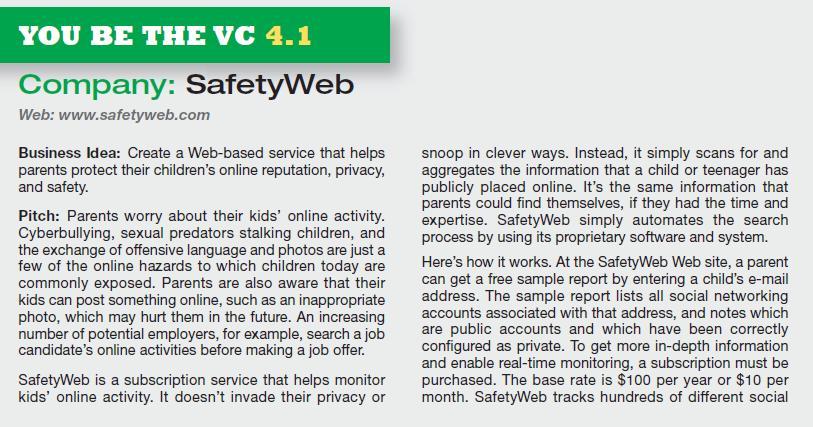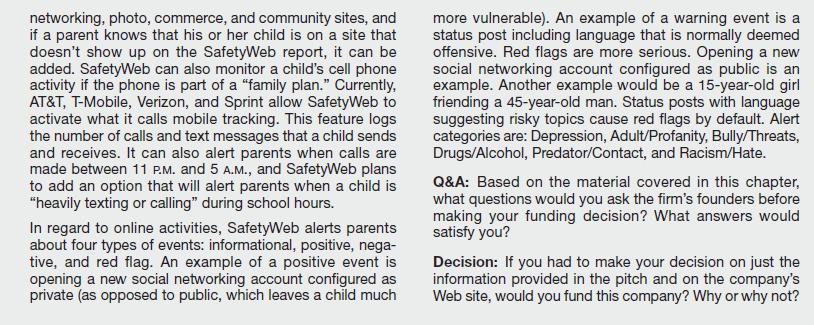It was a cool B2B business idea. While working at Liz Claiborne, David Reinke had the idea
Question:
It was a cool B2B business idea. While working at Liz Claiborne, David Reinke had the idea to use crowdsourcing to help retailers select the women’s clothing they would feature in their stores. Crowdsourcing is the act of outsourcing a task, traditionally performed by a company’s employees, to a larger group of people or community (a crowd) through an open call. The essence of Reinke’s idea was that a large group of women, drawing upon their collective intuitions and a sense of what they liked and what the women they knew liked, could do a better job of picking clothing for a retailer than a retailer’s own buyers.
To execute the idea, Reinke skipped the business plan and jumped right in. He hired a chief technology officer to build a fashion-oriented social network for women with a back end that would be relevant to the B2B market. The social network allowed participants to create user profiles, upload favorites, and view affiliate feeds so they could rank new fashions and put them into wish lists. StyleHop signed up two big-box retailers as pilot customers, who used the service to select what women’s fashion items to feature in their stores the following season. It worked. Reinke says that StyleHop panelist’s predictions were seven time more accurate than the predictions of in-house buyers when comparing how each item sold versus how much inventory had been ordered.
Regrettably, despite these encouraging results, StyleHop failed in late 2009. Reinke, in a candid interview with Howard Greenstein of Inc. magazine, outlined three reasons that contributed to StyleHop’s demise. First, rather than validating the crowdsourcing idea with retailers first, Reinke put a lot of effort into building the social networking site. In retrospect, he feels it would have been better to have validated the crowdsourcing idea with retailers first. As it turned out, buyers weren’t ready to change the way they had always done their buying.
This shot down a key assumption that Reinke had made—that buyers would opt for a new method of buying if proven to be more effective. Second, if the retail side had been validated first, Reinke feels he could have used Facebook, Twitter, and Google to assemble online focus groups, to make fashion-related predictions, rather than via StyleHop’s stand-alone social network, which was expensive to build and maintain. This approach would have resulted in higher operating margins, giving StyleHop more time to prove its concept. Finally, StyleHop got a little unlucky. The person they were working with at the larger of their two pilot firms switched roles in the company, putting StyleHop back to square one in terms of trying to show its value. This scenario illustrates the disadvantage of working with a single or small number of pilot firms.
Reinke is back in a traditional job but is still a believer in StyleHop’s vision and approach. In the Inc. magazine article referred to previously Reinke remarked, “StyleHop was knowledge and methodology, not technology.
Maybe we’ll get a chance to try it again in some form.”
Questions for Critical Thinking
1. In what ways do you think StyleHop suffered by not having a business plan?
2. What assumptions, other than those mentioned in the feature, do you think were integral to StyleHop’s business? In what ways could StyleHop have addressed these assumptions? In what ways, if any, do you believe StyleHop’s business would have evolved differently if StyleHop had seriously addressed these assumptions?
3. Do you think StyleHop conducted a feasibility analysis, prior to hiring a chief technology officer and starting to build the business? In what ways do you think a feasibility analysis could have helped StyleHop better anticipate the problems that eventually led to the firm’s failure?
4. The “You Be the VC 4.1” feature focuses on SafetyWeb, a company that’s created a Web-based service that helps parents protect their children’s online reputation, privacy, and safety. What are some of the main assumptions that SafetyWeb’s business plan is based on?


Step by Step Answer:

Entrepreneurship Successfully Launching New Ventures
ISBN: 9780132555524
4th Edition
Authors: Bruce R. Barringer, R. Duane Ireland





